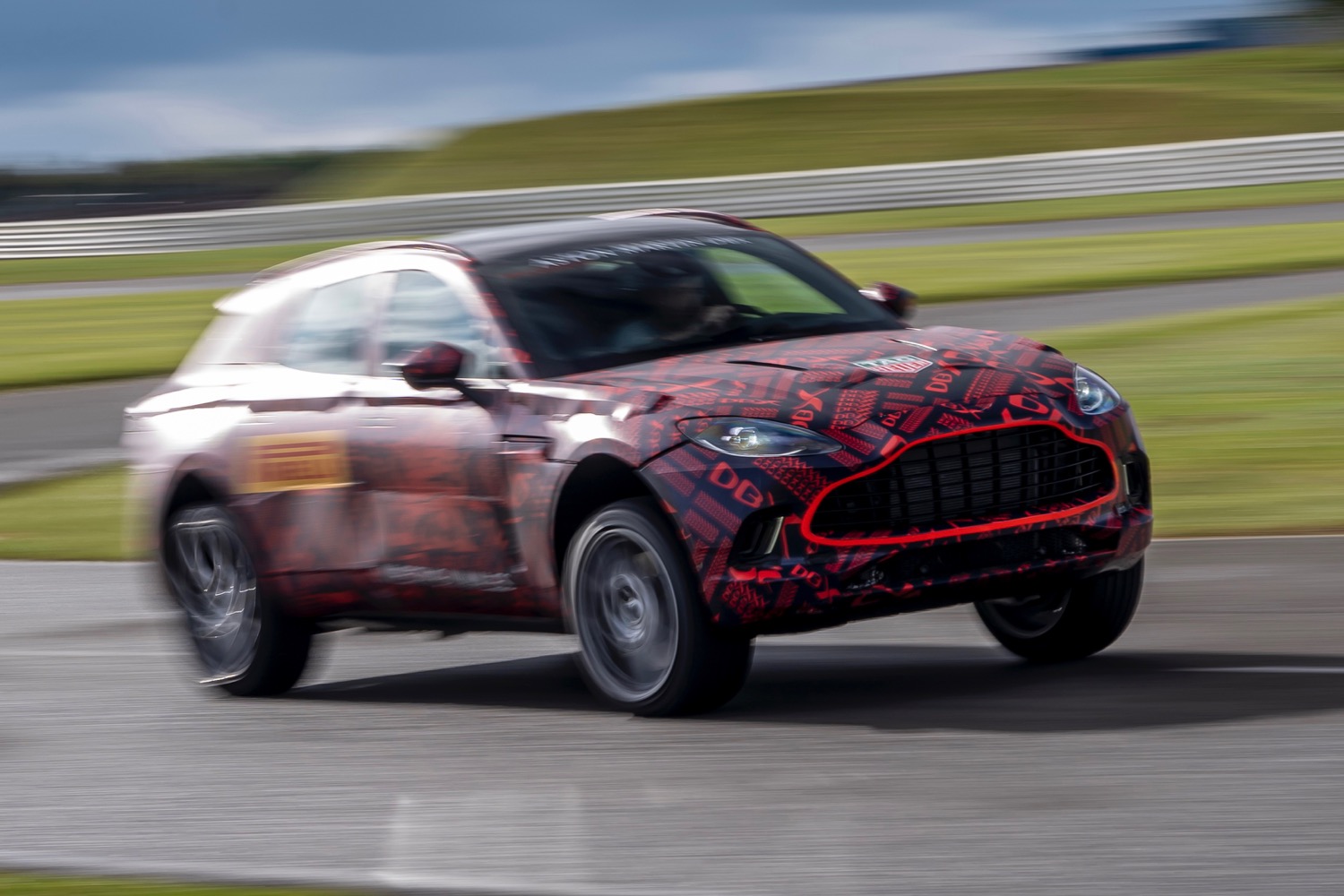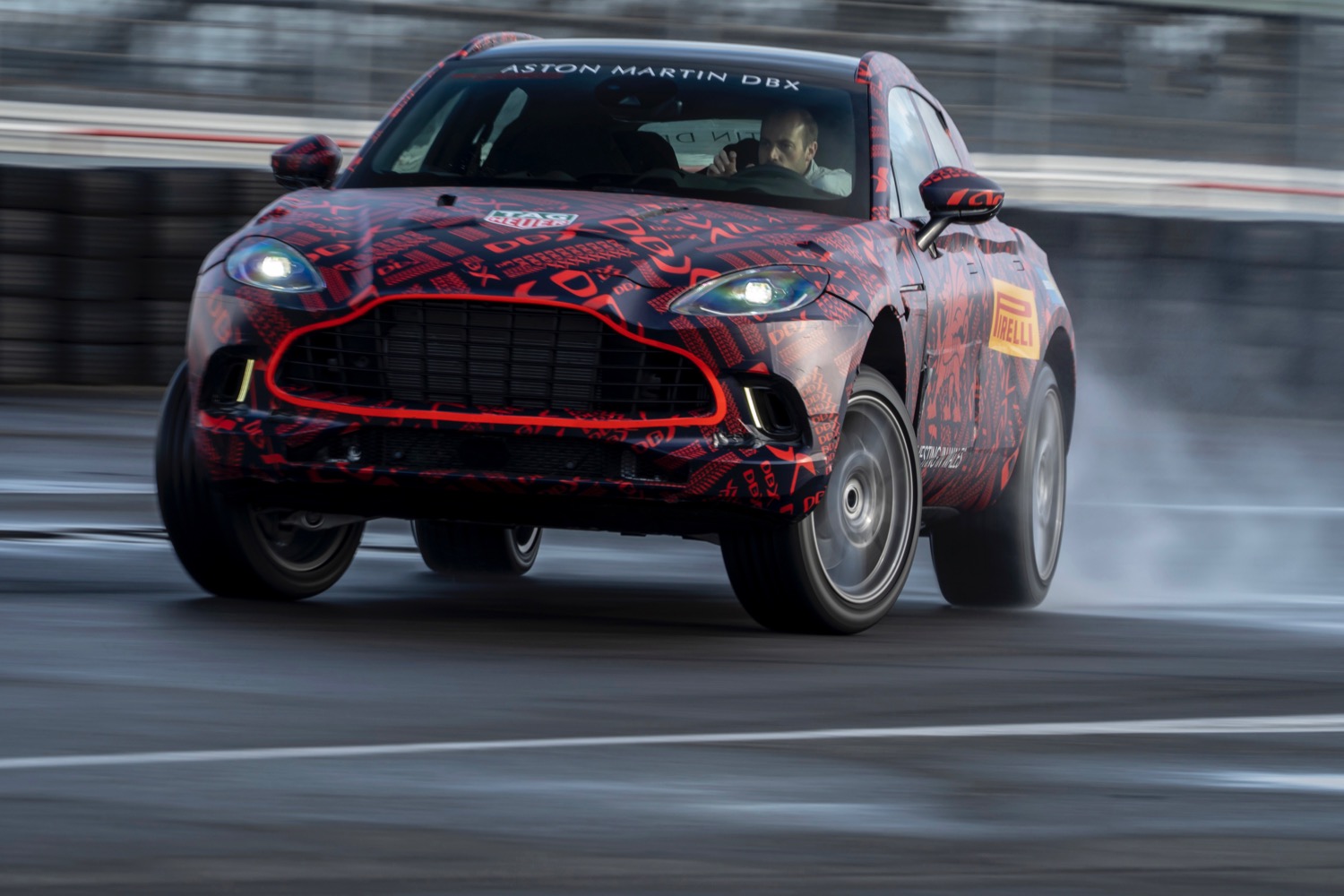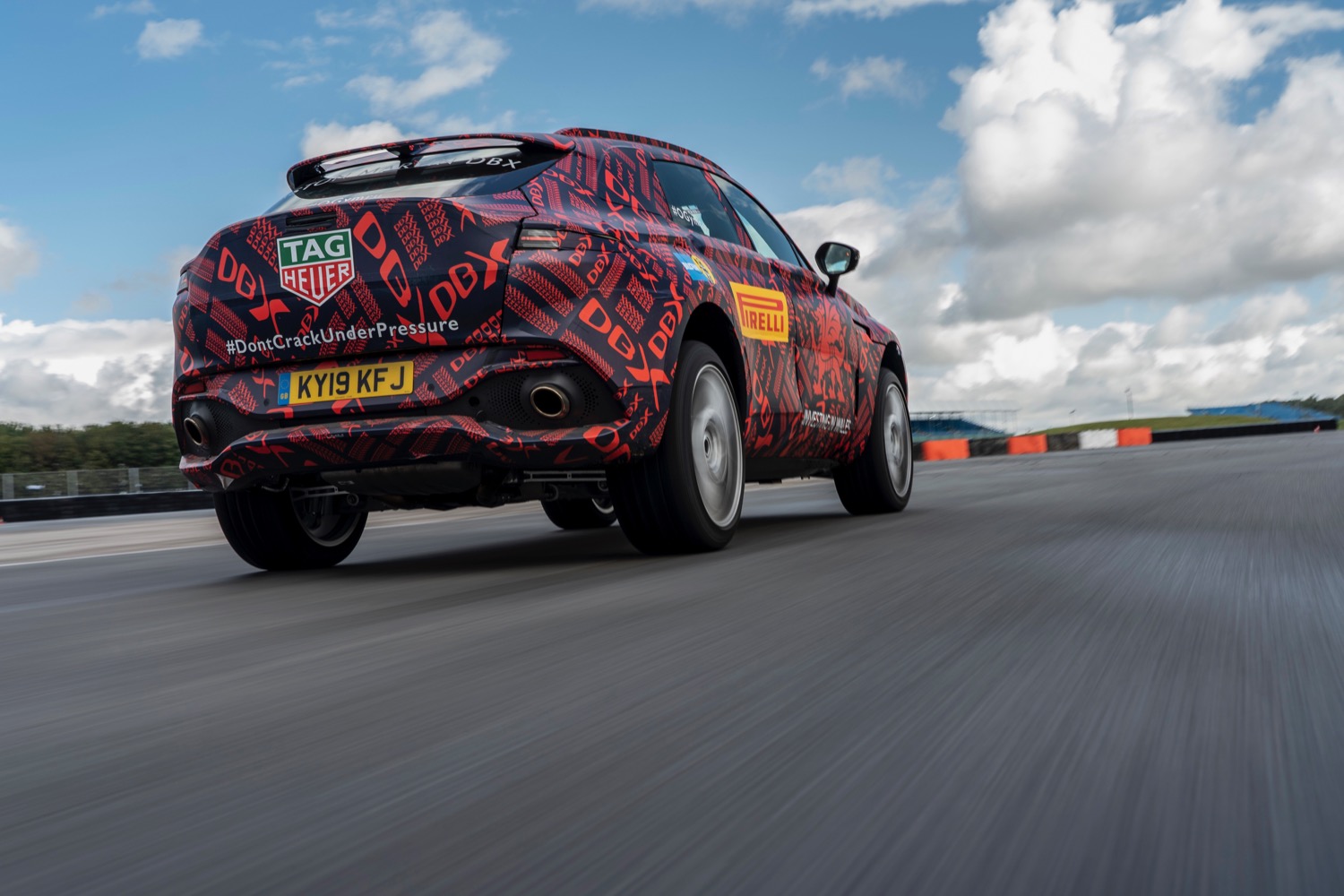The Aston Martin DBX will be a very different kind of vehicle for the storied British automaker, but it will use a familiar engine. Aston’s first SUV, the DBX, will use the same 4.0-liter twin-turbocharged V8 as the Aston Martin DB11 and Vantage. But the SUV will have more power than either of those sports cars.
The DBX will have 542 horsepower and 516 pound-feet of torque, according to Aston, compared to 503 hp and 505 lb.-ft. in the Vantage. The DB11 has the same power output as the Vantage, but with 498 lb.-ft. of torque (it’s also available with a 630-hp, 5.2-liter twin-turbo V12). It’s unclear how the extra power will impact performance, as Aston isn’t ready to reveal final acceleration times. The top speed hasn’t been finalized, but Aston claims the DBX has hit 180 mph in testing. Because it is a bigger, heavier vehicle, the DBX may still lag behind the DB11 and Vantage in these metrics.
The 4.0-liter twin-turbo V8 engine is borrowed from Mercedes-AMG, which uses it in a wide variety of models. The same engine makes 603 hp and 627 lb.-ft. in the Mercedes-AMG E63 S sedan and wagon, for example. An Aston press release said the automaker will try to distinguish the DBX from its other V8 models (and presumably Mercedes-AMG models using the same engine) with a unique exhaust note. The DBX’s exhaust system was tuned to produce a “deep bass” sound with “increasing midtones,” according to Aston Martin.
In addition to the on-road performance expected of a true Aston Martin, the DBX is expected to have some degree of off-road capability to justify its existence. Customers may not ever venture off-road, but that capability makes SUVs infinitely more desirable than comparable sedans. That combination of on-road performance and off-road ruggedness in a high-end package would be astonishing if we hadn’t already seen it in vehicles from the likes of Bentley, Lamborghini, and Porsche.
Aston first previewed the DBX in 2015 with a concept car of the same name. That concept had an electric powertrain, something Aston has shifted to other models. The automaker’s first production electric car is a version of the Rapide sedan, and Aston plans to follow that up with more electric models under its revived Lagonda sub-brand.
The Aston Martin DBX will make its public debut in December. The SUV will be built at a new factory in St. Athan, Wales, situated on a former Royal Air Force base. It’s a busy time for Aston. In addition to launching its first SUV and its first electric cars, the company will soon roll out the Valkyrie hybrid hypercar, which will offer race-car performance to a few lucky buyers.






